Potrebujeme váš súhlas na využitie jednotlivých dát, aby sa vám okrem iného mohli ukazovať informácie týkajúce sa vašich záujmov. Súhlas udelíte kliknutím na tlačidlo „OK“.
ASTM D4729-08
Standard Test Method for In Situ Stress and Modulus of Deformation Using Flatjack Method (Withdrawn 2017)
Automaticky preložený názov:
Štandardná skúšobná metóda pre in situ Stres a modulu deformácie pomocou Flatjack metódy
NORMA vydaná dňa 1.7.2008
Informácie o norme:
Označenie normy: ASTM D4729-08
Poznámka: NEPLATNÁ
Dátum vydania normy: 1.7.2008
Kód tovaru: NS-28332
Počet strán: 7
Približná hmotnosť: 21 g (0.05 libier)
Krajina: Americká technická norma
Kategória: Technické normy ASTM
Kategórie - podobné normy:
Zemní práce. Hloubicí práce. Budování základů. Podzemní práce
Anotácia textu normy ASTM D4729-08 :
Keywords:
creep, flatjack hydraulic pressure, in situ stress, modulus of deformation, Deformation--rock, Drilling (in soil/rock), Field testing--rock, Flatjack method, Gages, Isotropic rock specimens, Modulus--soil/rock applications, Rock materials/properties/analysis, Stress--rock, Surface preparation, Transducers, Underground environments, ICS Number Code 93.020 (Earth works. Excavations. Foundation construction. Underground works)
Doplňujúce informácie
| Significance and Use | ||||||||||||
|
Tests in Orthogonal Directions—The flatjack most accurately determines the stress parallel to the long axis of the adit, because this stress is the least affected by the presence of the opening. (The other tangential stress is highly concentrated.) In addition, if the adit is in a stress field where one of the stresses is significantly larger than the others (3 or 4 times), certain locations in the adit may be in very low compressive or even tensile stress. Flatjack tests in these locations can give anomalous and misleading results. Because of these factors, the test adit should have at least two, and preferably three, long (at least 4 to 5 times the diameter), straight sections at about 90° to each other. Testing should be distributed evenly in all three sections to provide redundant data and, if results in one section are anomalous, to allow the program to produce sufficient usable data. Note 1—Not withstanding the statements on precision and bias contained in this test method; the precision of this test method is dependent on the competence of the personnel performing it, and the suitability of the equipment and facilities used. Agencies that meet the criteria of Practice D 3740 are generally considered capable of competent and objective testing. Users of this test method are cautioned that compliance with Practice D 3740 does not in itself assure reliable testing. Reliable testing depends on many factors; Practice D 3740 provides a means of evaluating some of those factors. |
||||||||||||
| 1. Scope | ||||||||||||
|
1.1 The flatjack test measures stress at a rock surface. The modulus of deformation and the long-term deformational properties (creep) may also be evaluated. 1.2 All observed and calculated values shall conform to the guidelines for significant digits and rounding established in Practice D 6026. 1.2.1 The method used to specifiy how data are collected, calculated, or recorded in this standard is not directly related to the accuracy to which the data can be applied in design or other uses, or both. How one applies the results obtained using this standard is beyond its scope. 1.3 Limitation—The flatjack test measures the average stress normal to the surface of the test chamber. Undisturbed stress levels must be determined by theoretical interpretations of these data. 1.4 Assumptions and Factors Influencing the Data: 1.4.1 The stress relief is assumed to be an elastic, reversible process. In nonhomogeneous or highly fractured materials, this may not be completely true. 1.4.2 The equations assume that the rock mass is isotropic and homogeneous. Anisotropic effects may be estimated by testing in different orientations. 1.4.3 The flatjack is assumed to be 100 % efficient. The design and size requirements of 7.1 were determined to satisfy this requirement to within a few percent. 1.4.4 The jack is assumed to be aligned with the principal stresses on the surface of the opening. Shear stresses are not canceled by jack pressure. Orientating the tests in three directions in each plane tested prevents the misalignment from being excessive for at least one of the tests. 1.5 The values stated in inch-pound units are to be regarded as standard. The values given in parentheses are mathematical conversions to SI units that are provided for information only and are not considered standard. 1.6 This standard does not purport to address all of the safety concerns, if any, associated with its use. It is the responsibility of the user of this standard to establish appropriate safety and health practices and determine the applicability of regulatory requirements prior to use. |
||||||||||||
| 2. Referenced Documents | ||||||||||||
|
Podobné normy:
Historická
1.6.2014
Historická
1.4.2012
Historická
1.1.2011
Historická
1.1.2008
Historická
1.5.2010
Historická
1.2.2010
Odporúčame:
Aktualizácia technických noriem
Chcete mať istotu, že používate len platné technické normy?
Ponúkame Vám riešenie, ktoré Vám zaistí mesačný prehľad o aktuálnosti noriem, ktoré používate.
Chcete vedieť viac informácií ? Pozrite sa na túto stránku.


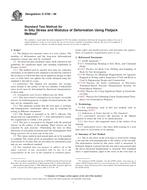
 ASTM D5335-14
ASTM D5335-14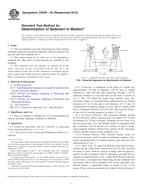 ASTM D5439-95(2012)..
ASTM D5439-95(2012)..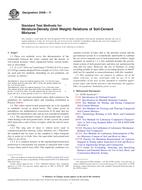 ASTM D558-11
ASTM D558-11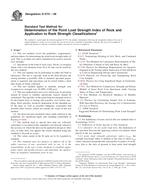 ASTM D5731-08
ASTM D5731-08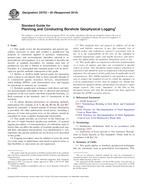 ASTM D5753-05(2010)..
ASTM D5753-05(2010)..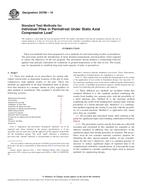 ASTM D5780-10
ASTM D5780-10
 Cookies
Cookies
